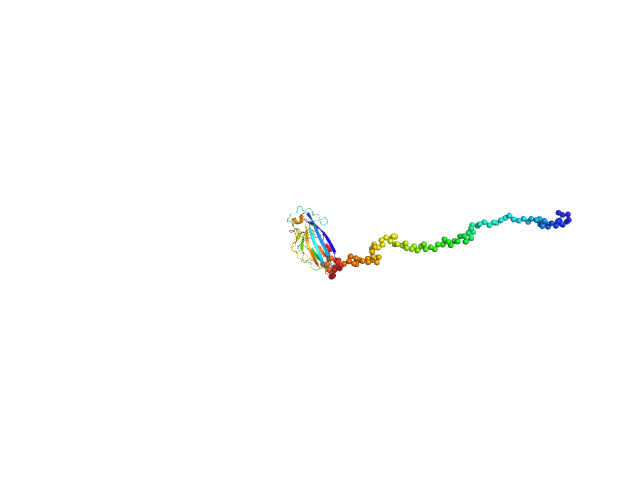|
Synchrotron SAXS
data from solutions of
PsrP functional binding region
in
PBS 5 % Glycerol, pH 7.4
were collected
on the
BM29 beam line
at the ESRF storage ring
(Grenoble, France)
using a Pilatus 1M detector
at a sample-detector distance of 2.4 m and
at a wavelength of λ = 0.93 nm
(I(s) vs s, where s = 4πsinθ/λ, and 2θ is the scattering angle).
Solute concentrations ranging between 0.3 and 3 mg/ml were measured
at 20°C.
10 successive
1 second frames were collected.
The data were normalized to the intensity of the transmitted beam and radially averaged; the scattering of the solvent-blank was subtracted.
The low angle data collected at lower concentrations were extrapolated to infinite dilution and merged with the higher concentration data to yield the final composite scattering curve.
|
|
 s, nm-1
s, nm-1
 Rg, nm
Rg, nm

